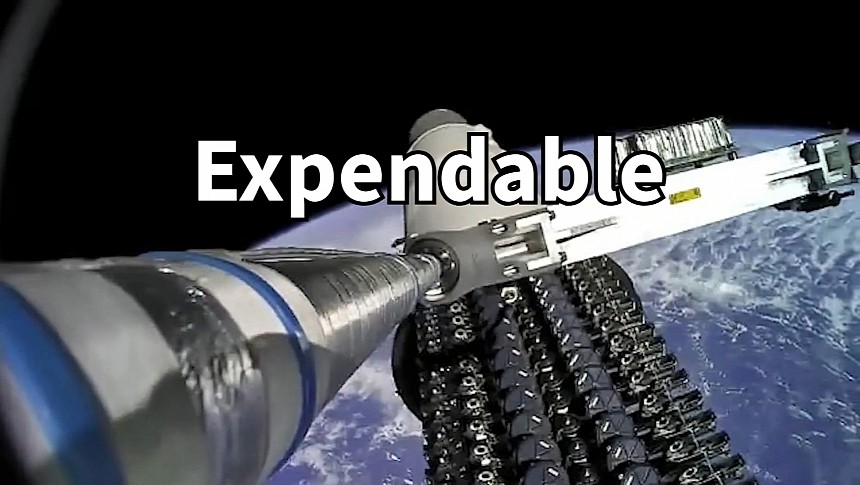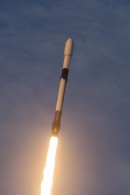Starlink satellites are expendable spacecraft designed to burn when they re-enter the atmosphere after about five years of service. Still, according to tracking data, SpaceX lost an unusually high number of satellites in the past two months.
Starlink is currently the most successful satellite internet network in the world, thanks to its extensive coverage and impressive bandwidth. In many parts of the world, Starlink is the only internet connection available. Even when there are alternatives, Starlink sometimes offers performance on par with landline communication lines. Its parent company, SpaceX, regularly launches new satellites into space to achieve this result, quickly expanding the network.
SpaceX's safety record is no less impressive, with the company nailing launch after launch without losing a single rocket. It's also the only space company that can reuse rocket thrusters. This reduces the launch costs significantly, as its rockets don't need to be replaced after each launch. These achievements allowed SpaceX to build an impressive satellite constellation, with over 5,000 satellites launched into Earth's lower orbit. About 4,500 of them are believed to still be active.
Independent satellite tracking data consulted by cybernews.com show that SpaceX lost a record number of satellites lately. Between July 18 and September 18, the Starlink constellation lost 212 satellites, an unusually high number. It's unclear what caused this massive loss, which doesn't seem to correlate with Starlink satellites' age.
As SpaceX increased the number of satellites launched into orbit, so did the number of burned-up satellites. Data shows a steady increase over the past three years. Still, the trackers observed a significant spike starting the month of July. The discrepancy is substantial enough to question the accuracy of the numbers listed on the satellitemap.space tracker's website. The tracker says its data is based on public tracking information published on space-track.org and elsewhere.
The most common reason could be that the satellites reached the end of life and entered scheduled de-orbit. Still, the high number indicates that it may be more than that. It would not be the first time SpaceX satellites encountered problems. In February 2022, a solar storm caused an entire Starlink fleet of 47 satellites to re-enter the atmosphere and burn.
The geomagnetic storm may have caused that disaster, but the satellites were ultimately lost because SpaceX insisted on launching them even though it knew the launch conditions were not optimal. The company was warned about the effects of the geomagnetic storm, but it decided to go on with the launch nevertheless.
In another incident in February, SpaceX lost many of the 21 Starlink V2 Mini satellites in Group 6-2 due to an unknown issue. At the time, Elon Musk attributed the failure to the new technology used in this satellite generation. He said some satellites were de-orbited while others could be saved and raised into orbit following proper testing.
SpaceX's safety record is no less impressive, with the company nailing launch after launch without losing a single rocket. It's also the only space company that can reuse rocket thrusters. This reduces the launch costs significantly, as its rockets don't need to be replaced after each launch. These achievements allowed SpaceX to build an impressive satellite constellation, with over 5,000 satellites launched into Earth's lower orbit. About 4,500 of them are believed to still be active.
Independent satellite tracking data consulted by cybernews.com show that SpaceX lost a record number of satellites lately. Between July 18 and September 18, the Starlink constellation lost 212 satellites, an unusually high number. It's unclear what caused this massive loss, which doesn't seem to correlate with Starlink satellites' age.
As SpaceX increased the number of satellites launched into orbit, so did the number of burned-up satellites. Data shows a steady increase over the past three years. Still, the trackers observed a significant spike starting the month of July. The discrepancy is substantial enough to question the accuracy of the numbers listed on the satellitemap.space tracker's website. The tracker says its data is based on public tracking information published on space-track.org and elsewhere.
The most common reason could be that the satellites reached the end of life and entered scheduled de-orbit. Still, the high number indicates that it may be more than that. It would not be the first time SpaceX satellites encountered problems. In February 2022, a solar storm caused an entire Starlink fleet of 47 satellites to re-enter the atmosphere and burn.
The geomagnetic storm may have caused that disaster, but the satellites were ultimately lost because SpaceX insisted on launching them even though it knew the launch conditions were not optimal. The company was warned about the effects of the geomagnetic storm, but it decided to go on with the launch nevertheless.
In another incident in February, SpaceX lost many of the 21 Starlink V2 Mini satellites in Group 6-2 due to an unknown issue. At the time, Elon Musk attributed the failure to the new technology used in this satellite generation. He said some satellites were de-orbited while others could be saved and raised into orbit following proper testing.






